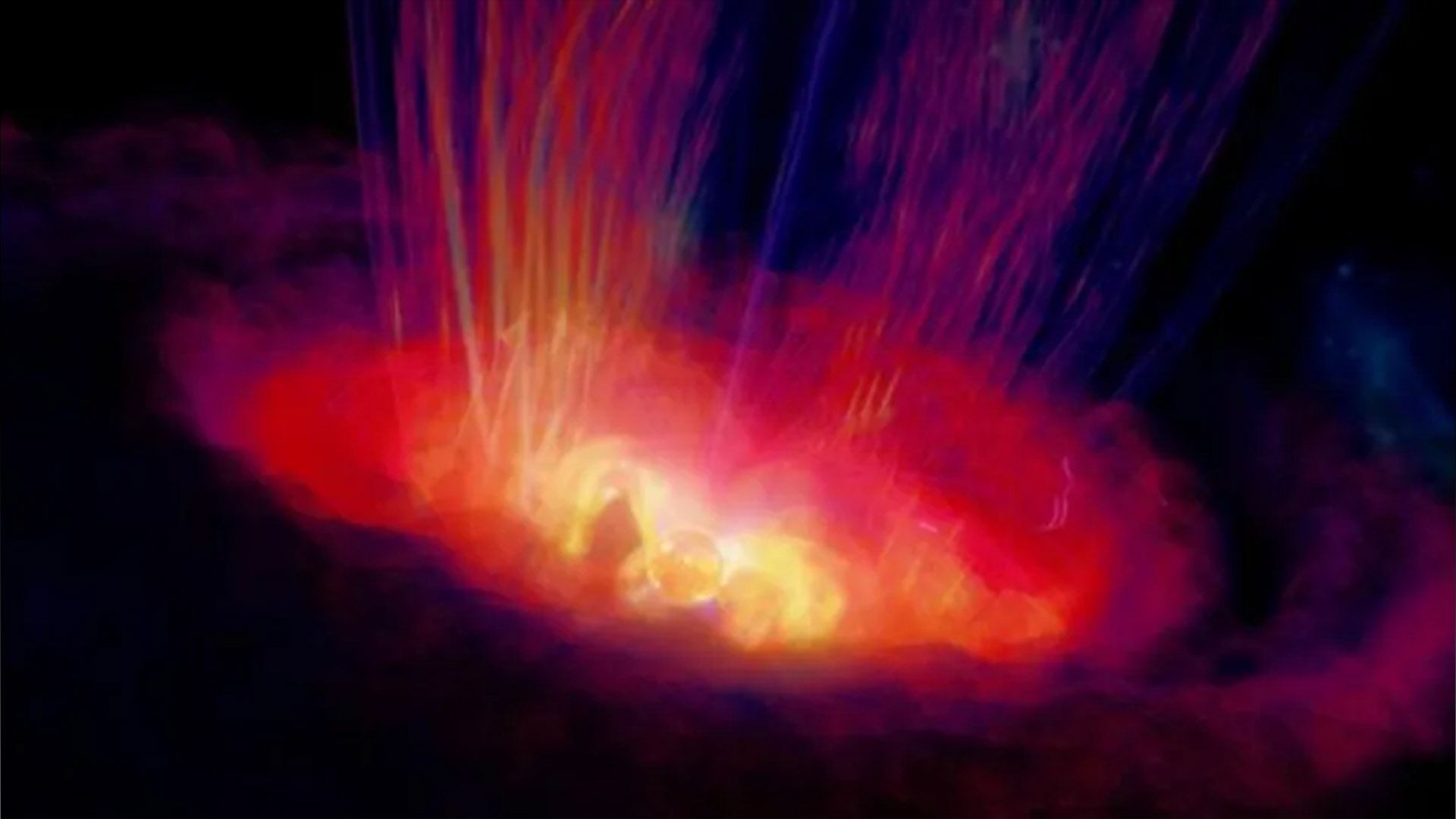Baby sun-like star caught spewing out gamma-rays in cosmic 'tantrum' for the 1st time ever
The discovery represents the first evidence that low-mass T.Tauri stars, which are less than 10 million years old, can emit gamma radiation.

Astronomers have witnessed a young, sun-like star blasting out high-energy gamma radiation for the first time.
The observation represents the first evidence that this type of low-mass star, called a T. Tauri star and surrounded by a planet-forming disk of gas and dust, can emit gamma radiation. In a nutshell, this type of radiation represents the most energetic form of light. Down the line, these findings could have important implications for our understanding of stars and planetary systems during their formative years.
"This observational evidence is essential for understanding the origin of sources that have previously remained unknown for more than a decade, which is unquestionably a step forward in astronomy," Agostina Filócomo, discovery team leader and an astronomer at the Universidad Nacional de La Plata, said in a statement. "It is also critical to comprehend the processes that occur during the early phases of star formation: If a T Tauri star produces gamma-ray radiation, it will affect the gas conditions of the protoplanetary disk and, consequently, the evolution of planet formation."
The astronomers captured their observations of this intriguing star with the Fermi satellite telescope, which observes the universe in gamma rays. In other words, this telescope has the ability to collect high-energy radiation data that can be tough to gather from the surface of Earth. Fermi has been observing the sky since it launched in 2008, but about 30% of the gamma rays it has seen have yet to be attributed to a source. Thus, Filócomo and her team set about attempting to identify some of these mysterious sources.
Related: Bizarre new cosmic object is the most magnetic star in the universe
Gamma rays could come from tantrum-throwing infant stars
The research team basically found that many gamma rays appear to originate from regions with actively forming stars. This is something that defied explanation and thus required deeper investigation, with the team honing in on the star-forming region NGC 2071.
In particular, Filócomo and colleagues looked for T.Tauri stars in NGC 2071, which lies in the northern part of the molecular cloud Orion B, located around 1,350 light years from Earth. T.Tauri stars are notable because they are often found near star-forming regions, still cocooned in the very gas and dust that created them. And because they are shrouded in these gaseous cradles, T. Tauri stars exhibit fluctuating levels of brightness — making them a type of variable star.
Get the world’s most fascinating discoveries delivered straight to your inbox.
The team identified three different unidentified gamma-ray sources that seemed to be coming from the direction of NGC 2071, where at least 58 T. Tauri stars are known to be currently forming. There are no other objects in the region that could be sources of gamma-ray emissions, the researchers reasoned.
The team thinks T. Tauri stars could be emitting gamma rays sporadically during powerful flare events called "megaflares," which occur when magnetic energy stored in the atmospheres of young stars gets released in the form of powerful electromagnetic bursts.
This concept is similar to the way solar flares are launched by the sun, except they occur on a radically larger scale. Megaflares can stretch for distances equivalent to several times the radius of the stars that launch them in the first place and are so powerful that, if the sun were to blast out such an eruption, life on Earth would be threatened.
Yet despite this destructive potential, some scientists argue that megaflares in the early history of the solar system, when the sun was embedded in a disk of gas and dust, may have actually been beneficial to planet birth by driving gas and triggering the formation of pebbles and other small rocky materials.
As such, not only could the team's findings help account for previously unattributed gamma-ray detections, but could have implications for our understanding of the solar system — especially during the period when our planet was being created.
"The discovery of this phenomenon serves to understand how not only the sun but also our home planet, Earth, were formed and evolved," Filócomo concluded.
The team's research was published Aug. 23 in the journal Monthly Notices of the Royal Astronomical Society.
Robert Lea is a science journalist in the U.K. who specializes in science, space, physics, astronomy, astrophysics, cosmology, quantum mechanics and technology. Rob's articles have been published in Physics World, New Scientist, Astronomy Magazine, All About Space and ZME Science. He also writes about science communication for Elsevier and the European Journal of Physics. Rob holds a bachelor of science degree in physics and astronomy from the U.K.’s Open University




